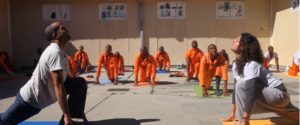Positive Mindfulness
By John M. de Castro, Ph.D.
“It is possible to live happily in the here and the now. So many conditions of happiness are available – more than enough for you to be happy right now. You don’t have to run into the future in order to get more.” – Thich Nhat Hanh
Much of the tone of Buddhist teachings was established with the Four Noble Truths; there is suffering, there are causes of suffering, suffering can be relieved, and there is a path to the end of suffering. This focuses us on suffering, the negative side of existence. Without a doubt, these Four Noble Truths are correct and following them is a means to end suffering, become happy, and become enlightened. But, the negative tone has permeated much of the practice. The focus on the unpleasant has made the practice seem to be a chore, a necessary chore, but, nevertheless a chore. The unpleasantness prompts escape into mind wandering.
But, this tone can be completely altered without altering the truth of the teachings. The Four Noble Truths can be simply restated in the positive; there is happiness, there are causes of happiness, happiness can be increased, and there is a path to endless happiness. This simple rejiggering of the teaching makes a tremendous difference. It focuses the practice on happiness, making it a pleasant endeavor that can be enjoyed, relished, pleasurable, and looked forward to. It changes the practice from a chore to a joyful endeavor.
The science of Psychology has long established that all creatures, and especially humans, respond best to the positive. Negatives produce distaste and avoidance behaviors. On the other hand, if someone receives a positive reward for doing something they are not only more likely to do it again, but they will also feel good about it. So, changing the Four Noble Truths into the positive, can make practice not only an enjoyable experience, but more likely to occur.
This does not suggest that we should pursue happiness as is done in the modern western world. In this paradigm, happiness is pursued by consumption and accomplishment. When we buy something new, say a designer watch, it makes us happy. But, this happiness, like everything is impermanent, it fades and the watch no longer makes us happy. So, now we pursue something else, perhaps a new car. After working hard and saving, we go out a buy a brand new luxury car. This brings us happiness. But, just like the happiness from buying the watch, it fades and eventually the car no longer makes us happy. In fact, the monthly payments may make it a source of suffering.
In the modern world happiness is also pursued by accomplishment. We go through a prolonged education to acquire a degree. Upon graduation, we feel very happy, but this too fades. So we think that when we get a good job, then we’ll be happy, and indeed when we obtain it we do feel very good and happy for a while, but unfortunately, that too fades. So, we look for a promotion or a new job to make us happy, and again it does but only temporarily. This whole cycle is termed by Psychologists as the “hedonic treadmill.” We keep pursuing things because they temporarily make us happy but each happiness is impermanent and we get back on the treadmill looking for the next thing that will make us happy, on and on and on. Instead of happiness it brings disappointment and suffering.
Perhaps there’s a better way, and that is pursuing happiness in our practice. We look carefully and mindfully at what actually produces more lasting happiness. This can begin very simply. When you feel happy, even for a brief moment, simply look at it carefully and reflect on exactly how you feel, what are the sensations you experience in your body. This practice can make you more sensitive to happiness and more aware when happiness actually arises. Also, reflect on what led up to this happiness. This can help to make it clearer what the roots of happiness are to you and perhaps how to produce it in the future.
This simple practice of meditating on the state and causes of your happiness will slowly begin to expand the frequency, duration, and depth of the happiness you experience. This can begin to interrupt and push suffering away. There’s a process in psychological practice called counter conditioning. In this process, you eliminate an unwanted state or behavior, not by stopping it, but by replacing it with a positive state or behavior. This is very effective. So, as you expand happiness you are in fact counter conditioning suffering and replacing it with happiness. This suggests that there’s no need to focus on the elimination of suffering. In fact, trying to eliminate it often amplifies it or becomes itself a suffering. In contrast, focusing on happiness, eliminates it in a joyful way, overwhelming the gloom with sunshine.
During mindfulness practice it’s good to keep in mind Thich Nhat Hahn’s instruction to start by putting a smile on your face. Even if it’s a bit forced, it still somehow makes you feel happier. It’s also a reminder to look for good feelings and happiness during the practice. I like to focus while meditating on what and where something feels good on my body, maybe a subtle tingling sensation in a foot or an obvious cool breeze striking the face. I meditate on how beautiful it is to just be alive and sitting quietly. I listen closely to the symphony of sounds, some even internally in my head, and wonder at the miracle of hearing and the beauty of the sounds themselves. In hearing you own internal voice you can laugh at its inane content, bring joy rather than frustration at not being able to quiet the voice. What actually is looked at doesn’t matter so much but that the habit be built of seeing the goodness, the aliveness, the joy, and the happiness that is right there, all the time while doing something as simple and mundane as meditating.
This may seem contrary to the instruction of focused meditation to pay attention to only one thing and become single pointed. But, you’ll find that when you focus on the good, it becomes easier to concentrate and you become better at single pointedness. It is transformed from a frustrating chore to a source of joy. This not only enhances meditation but also makes it more likely that you’ll meditate in the future and look forward to it. Positive practice might also seem contrary to the instruction of open monitoring meditation let go of trying to control experience but to allow everything to just arise and fall away on its own, while just noticing. Looking for the positive may seem to be controlling. But, as it turns out, positive practice leads to better open monitoring as you learn to experience the joy and happiness in what is spontaneously occurring around you. It becomes easier to continue observing and lessens the mind wandering.
Meditation is only a platform to practice skills to apply to everyday life. Happiness can be found while doing everyday things. I like to look for good feelings and happiness no matter where I am, what I’m doing, or the conditions around me. I sometimes swim laps in a pool. This can be excruciatingly boring. But, I focus on how good my body feels in the water, the exquisite feelings of the internal sensations of energy in each part of my body, and the miracle of body in motion and the automatic unconscious movements controlling it. This changes what could be experienced as a chore to a joyous, mindful, and pleasurable experience.
You can do something similar almost anywhere, perhaps driving a car. Looking at traffic and noticing how well people work together to produce a safe environment, or accommodate someone who is driving not so safely, can produces a loving smile. When stopped at a traffic light, looking around and at the sky, looking for and finding the beauty and wonder all around can transform impatience to happiness. While driving remembering and seeing the joy experienced when you first got behind the wheel and drove as a teenager. Again, what exactly you do is unimportant. Rather the practice is to see the happiness everywhere around you all of the time.
We need to accept that this will be an ongoing process. As Thich Nhat Hahn reflected “When I was a young monk, I wondered why the Buddha kept practicing mindfulness and meditation even after he had already become a buddha. Now I find the answer is plain enough to see. Happiness is impermanent, like everything else. In order for happiness to be extended and renewed, you have to learn how to feed your happiness. Nothing can survive without food, including happiness; your happiness can die if you don’t know how to nourish it.” This makes it clear that we should continually renew and reinforce the state of happiness.
Happiness is self-reinforcing. The more you find it the more it promotes more happiness. It slowly builds upon itself, generalizing to other similar activities and circumstances producing an upward spiral of good feelings. You’ll find that slowly happiness begins to fill more and more of your day displacing more and more of the suffering. This is an automatic byproduct of positive practice which can completely change your view and experience of existence. Life become transformed from constant suffering to constant happiness. Try it. You’ll like it.
“Mindfulness helps you go home to the present. And every time you go there and recognize a condition of happiness that you have, happiness comes.” – Thich Nhat Hanh
CMCS – Center for Mindfulness and Contemplative Studies
This and other Contemplative Studies posts are a also available on Google+ https://plus.google.com/106784388191201299496/posts









